Before World War II, women were primarily housewives. The majority of them did not work outside the home, and the few ones who did were employed as secretaries, receptionists or department store clerks as other types of job were considered unsuitable for women. However, once America entered World War II, because of the absence of men who joined the military, the demand for female labour in the United States grew incessantly, and women had to step into the civilian jobs the men had left behind. This period spurred social change, with popular culture portraying women in a new and different way, and that highlighted female liberation and independence.
In spite of that, the need for working women was supposed to be temporary; they were expected to leave their jobs and go back to domestic duties after the war ended. This was frowned upon by the female workers as they did not want to give their new-found independence and power. As a result of that, upon returning to their home, the feelings of isolation and invalidation increased. This has subsequently influenced considerably the portrayal of female characters in American cinema.
The appearance of the film noir movement occurred concurrently with the rise and fall of the women’s employment throughout and post-World War II. The female roles in film noir are stylistic transformations of the default patriarchy, designed to be inoffensive additions to the narrative. Notwithstanding, these roles are a direct reflection of the dark reality of the re-oppressed female of post-World War II America, when women were supposed to return to their home after finding not just financial independence but also freedom through the workforce.
Also Read: Chameleon (2019): Noir Roots We Deserve
The balance of the home that women had when they joined the labour force during World War II was quickly swept away when the patriarchal social order tried to reinstate itself when the war was over. Within the stylistic norms of the noir genre, the rough lighting and the gloomy visual clues of danger reflects the unsettling, broken domestic order, highlighting to the audience the tension in the home and the women’s role in triggering the narrative. The disturbance in the domestic space is caused by the rebellion of female characters, typical of film noir, which is not taken lightly by the male protagonists on the verge of losing their power, much like the reality of the misery of the heteronormative patriarchal order losing its control of women.
Thus, for many women, World War II became a turning point of the feminist movement. It was a period where women were no longer forced into roles society had shaped them into and the representation of women in film noir is a reflection of this freedom. The archetype of female roles in film noir can be divided into three categories: the girl-next-door, the femme fatale and the good-bad girl. The girl-next-door is characterised as being ordinary, approachable and innocent. She is honest and pure, and known to be naturally sweet. The term refers to the fact that she usually lives right next door to the male protagonist, having grown up with him and known him his entire life. An example of the girl-next-door would be Keechie Mobley (Cathy O’Donnell) in They Live by Night (Ray, 1948).
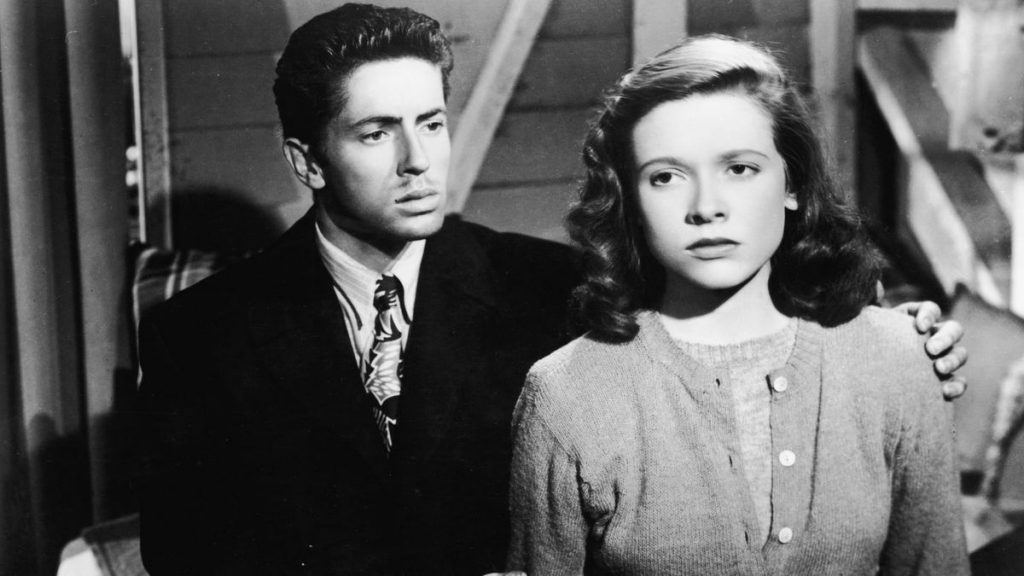
The femme fatale, considered by many critics the central figure of film noir, is mysterious and seductive, known for using her charms to ensnare men and get them into dangerous, and most often, deadly situations. Her main characteristic is using her feminine sexual traits as a way to achieve hidden purposes. One of the most infamous femme fatales in film noir is Barbara Stanwyck’s Phyllis Dietrichson in Double Indemnity (Wilder, 1944). The good-bad girl stands in between the girl-next-door and the femme fatale, which highlights her moral ambiguity.
As Andrew Spicer (2007, pg. 92) explains: “The figure of the ‘good-bad girl’ combines the sexual stimulation of the femme fatale with the fundamental decency of the girl-next-door and constitutes a central modern American type. Her importance to the noir cycle is difficult to overestimate. She can appear to be cynical, wilful and obsessed with money, but this stems from disillusionment with men and the frustrations of a circumscribed life.”
Related to Women in Film Noir: Masculinity in Taxi Driver, Chinatown and Drive
For this essay, I will focus on analysing the archetype of the good-bad girl as the embodiment of female power in a male-dominated period. To do so, I specifically picked Lauren Bacall’s role as Vivian Sternwood in The Big Sleep (Hawks, 1946) to use as an example.
At the beginning of the film, the audience is introduced to two possible femme fatales, Vivian and Carmen (Martha Vickers) Sternwood. Carmen presents herself as a typical femme fatale, using her female sexuality as a method to get what she wants – although Humphrey Bogart’s Phillip Marlowe resists her advances. Aware of her role as a sexual object, she’s only wearing a short skirt, exposing her legs and thighs to the detective, “which the camera both acknowledges and ignores simultaneously by not focusing in on her legs, but also repeatedly shooting from medium distance to ensure her full figure is shown” (Duckworth, 2010).
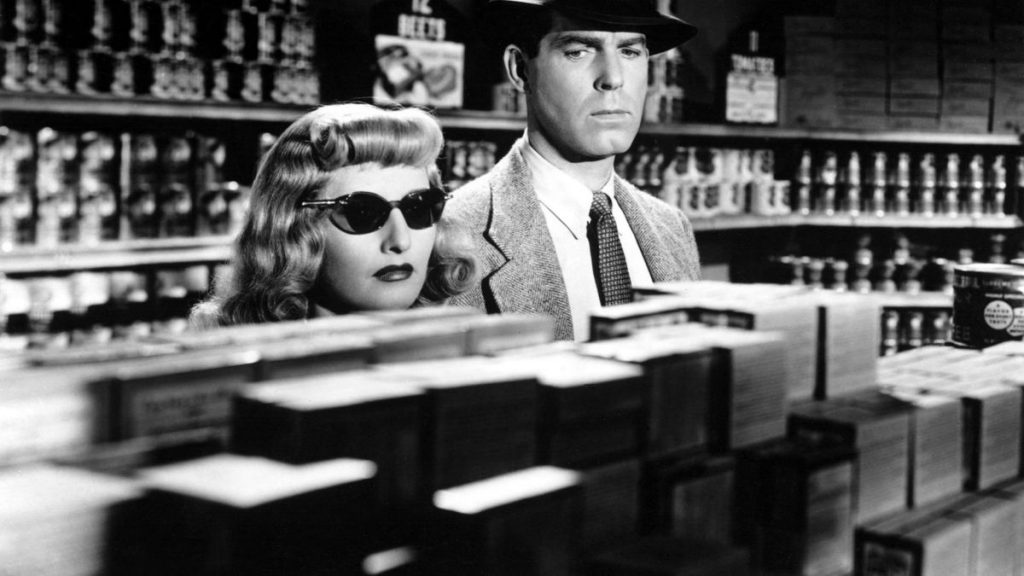
Carmen also physically flirts with Marlowe by faking a swoon into his arms. Her undisguised exhibit of sexuality is contrasted by the representation of Vivian, who denies many traditions of the female destroyer and, unlike her sister, is dressed reservedly and manly. “Her costuming is a subtle denial of another stylistic convention of the film noir genre: the sinister allure of the femme fatale – Vivian wears not passive and seductive whites, but active and assertive jackets and collars” (Slattery, 2001). By dressing in such a way, Vivian does not rely on her physical and sexual features to impress Marlowe – unlike Phyllis, who entraps Walter Neff (Fred MacMurray) with her sexuality directly – which gives her more power in their conversations, allowing her to go up against him as an equal. Therefore, their relationship has a more genuine feel than most formed with a typical noir woman.
The good-bad girl has both masculine and feminine traits. In Bacall’s case, her awkwardness, her teenage masculinity and her sultry, smoky-voice were the qualities that attracted the audiences. Her deep-toned, husky and manly character gave her a dangerous and edgy charm. Her sex appeal, therefore, derives from that. Unlike the femme fatales, Bacall’s Vivian’s sex appeal does not come from her looks, but from her power. Her strong attitude, her confidence and her adult sexuality challenged gender stereotypes by being a dominant, beautiful woman with untraditional female qualities. Bacall’s good-bad girl made up feminist interest because she breaks the conventional onscreen romance and demeaning stereotypes of women in film noir.
As Janey Place explains about the good-bad girls, they “are active, not static symbols, are intelligent and powerful, if destructively so, and derive power, not weakness, from their sexuality” (1996, pg. 35). Vivian is a single, independent woman whose sexual confidence and laconic personality could mistakenly categorize her as femme fatale. However, the difference is, she’s on the hero’s side. Despite appearing to be duplicitous and denying any connection with small-time gangster Eddie Mars (John Ridgley) to Marlowe, Vivian is loyal to Bogart’s detective, in the end untying him and allowing him to get to his gun so he could kill Mars’s hitman, Canino (Bob Steele).
The dualism of her morally ambiguous actions and her loyalty to the protagonist is “the yin and yang of puritanism and cynicism, of egoism and paranoia, of greed and idealism” (Raymond Durgant, 1996, pg. 94). For that reason, Marlowe and Vivian’s relationship ranges through degrees of love and hate. Before untying Bogart’s character, who has been beaten up and has blood in the corners of his mouth, Bacall’s good-bad girl lights him a cigarette and kisses his swollen, bruised lips.
This ambiguous atmosphere of latent sexual tension is additionally developed by the pair’s provocative and witty exchange of wisecracks throughout the film. Dialogue is not used as a verbal display of cleverness, though; it presents characters testing each other, determining intentions, fishing for revelations, etc. Their toughness is made apparent not just in the action and shooting sequences, but also in verbal wit, which is a different but equally effective demonstration of power. An example of that is when Marlowe meets Vivian for the first time. Bacall’s character is suspecting that her father (Charles Waldron) has more than one reason to call in a detective and tries to get the truth of Marlowe through banter:
“Vivian: My, you’re a mess, aren’t you?
Marlowe: I’m not very tall either. Next time I’ll come on stilts, wear a white tie and carry a tennis racket.
Vivian: I doubt if even that would help.”
Also Recommended: Pale Flower (1964)
Her playful remark not only instantly catches the detective’s attention but also, as Spicer explains, “offers the male protagonist a provocative, slightly mocking image of himself which allowed him to feel at home with her as he might with a male companion” (2007, pg. 92). These repartees present Vivian as a hard-bitten woman who, unlike her sister, does not give in easily to men’s romantic advances. The duality of her conduct, before she actively chooses to be on the hero’s side, and the uncertainty of her true feelings for Marlowe before revealing it to him seems to be, in part, one of the reasons why the detective is so fond of her.
In that sense, Bacall’s character is a typical woman who knew too much, withholding information not only about her family’s ties in what turns out to be a web of crimes but also about her feelings for Bogart’s character. This mysterious ambience can be appealing to men; as Richard Dyer clarifies, “women in film noir are above all else unknowable. It is not so much their evil as their unknowability (and attractiveness) that makes them fatal for the hero” (1996, pg. 92). In Vivian’s case though, since The Big Sleep denies many of the common narrative conventions of the noir style – including the presence of a femme fatale – the film allows the story to end with the exhilarating relationship between Marlowe and Vivian.
In a typical noir storyline, the amorous relationship is generally doomed, much like Phyllis and Walter’s relationship in which they end up shooting each other, but the triumph of their romance unmasks Bogart and Bacall’s tenderness and capacity for genuine affection hidden behind their flirtatious banter. Their consolidated romance also emphasises Marlowe’s character development, going from cynical to romantic, mainly because of Vivian, which is often non-existing for many film noir protagonists, e.g. Walter Neff.
Much like Gone with the Wind (Fleming, 1939) portrays Scarlett O’Hara (Vivien Leigh) as a strong, determined, hard-headed, independent woman during the American Civil War and the Reconstruction era, ages which constantly tried to subjugate women, The Big Sleep directly reflects the reality of the empowerment women gained throughout World War II. The film features two financially secure female characters (Vivian and Carmen), whose rich yet physically weak father represents the broken, paternalistic capitalist society pre-World War II, which demands financially and sexually independent women to be contained within appropriate institutions, such as marriage and family.

By having a good-bad girl of ambivalent nature as the main female part, Howard Hawks introduces a new type of noir woman; one that is half-devouring and half-devoured, bringing about and taking charge of the action. Vivian is as hard-bitten as the dark American environment she is in and she is much of an expert in being mysterious as she is in being romantic. Bacall’s character is a woman who knew too much from a pervasive post-War American life, a far cry from the innocent heroines of the old-minded westerns. All in all, the good-bad girls in the film noir “are the rightful inheritors of this daughter of the South carried off by the wind [Scarlett O’Hara].
A taste for power, a love of money, cynicism, a total lack of scruples, sexual coldness, an instinct to dominate and violent passions: such qualities mean that these women characters are enduring and thriving replicas of Scarlett. They are Scarletts taking action within the different social domain of twentieth-century America. They are the Scarletts who are denounced, but still preserved from annihilation.” (Siclier, 1996, pg. 74) In conclusion, the representation of the good-bad girl in The Big Sleep illustrates the important changes in the position of women in the post-World War II American society.
The presence of such archetype is born from the temporary but strong introduction of female workers in the American labour force throughout World War II. The character of Vivian also challenges multiple film noir conventions like the femme fatale of Double Indemnity; by being a powerful yet delicate woman, she destroys the myth of noir women as a threat to male aspiration without falling into the stereotypical oppressive role of the girl-next-door of O’Donnell in They Live by Night. The Big Sleep then manages to have a successful, strong woman in what is essentially considered a film of a manly genre, directly challenging the ideological structures of the traditional patriarchy by increasing the independence of women – financially and otherwise.


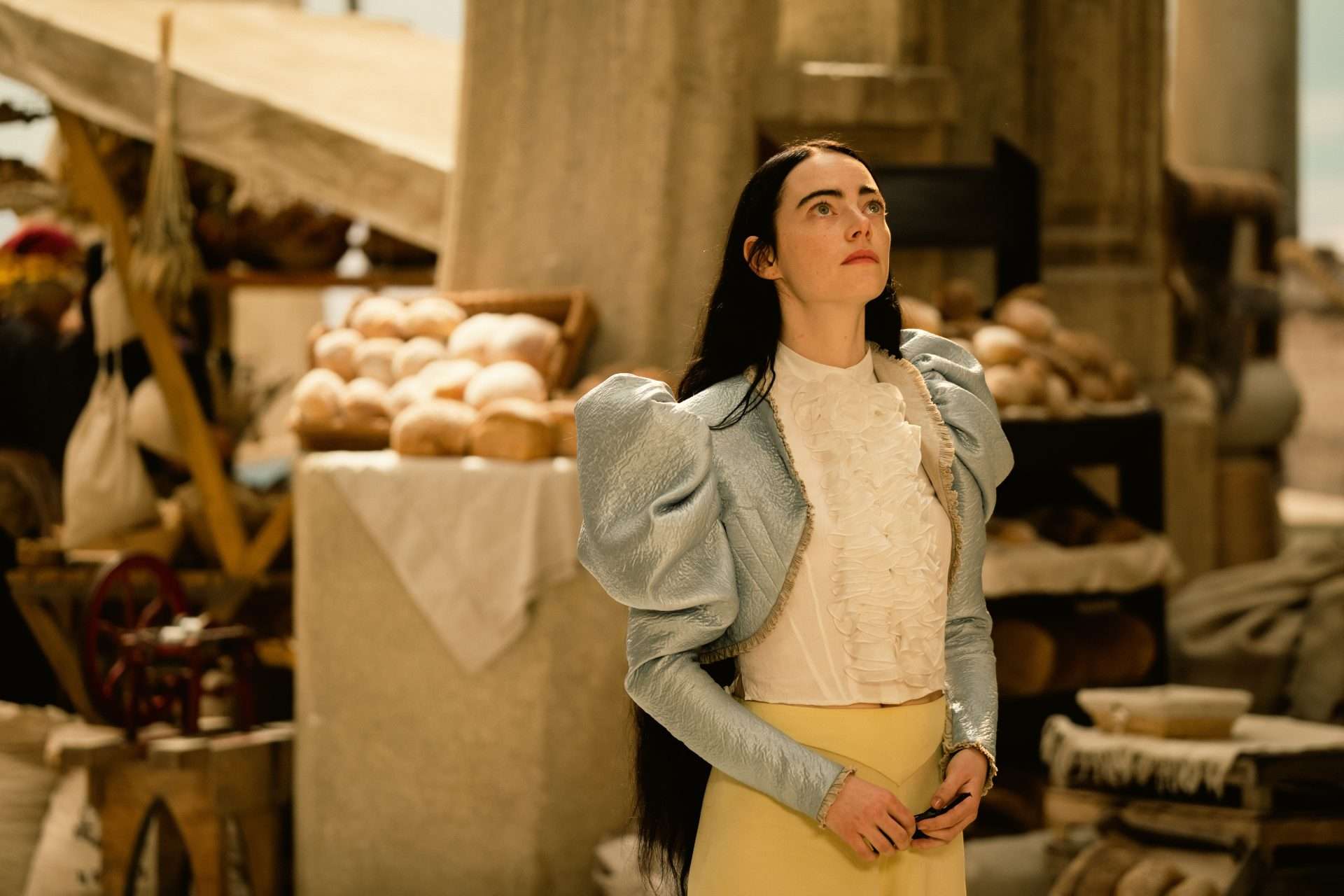
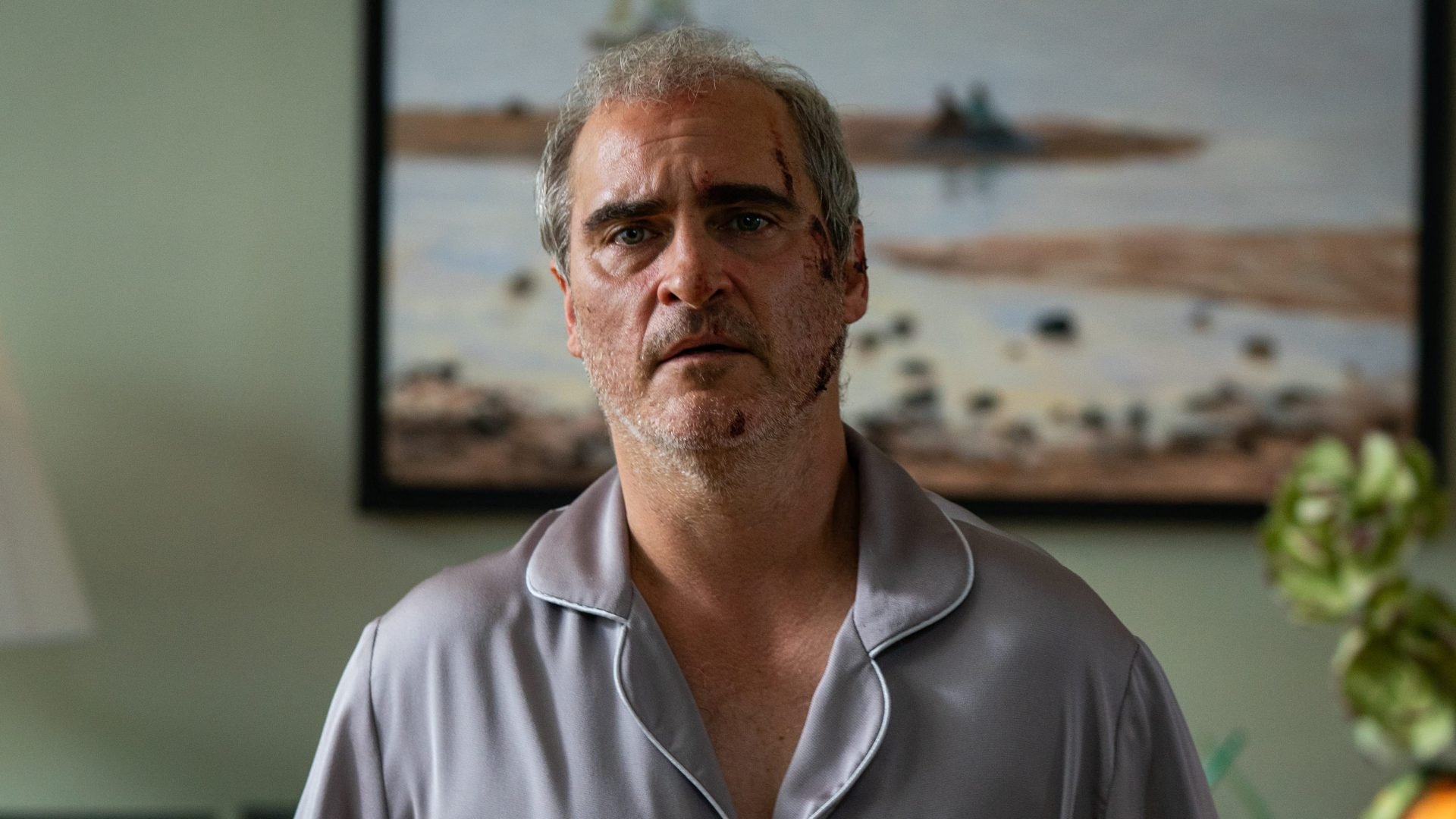
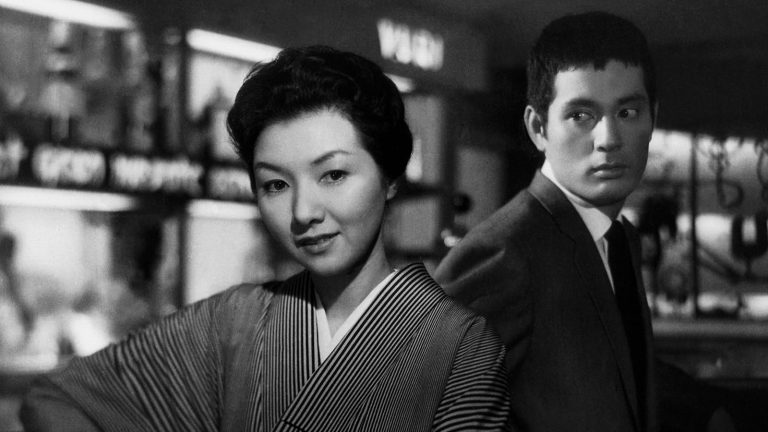

![Gabbeh [1996] Analysis: Glimpses into a lyrical divinity](https://www.highonfilms.com/wp-content/uploads/2022/08/Gabbeh-1996-768x509.jpg)


